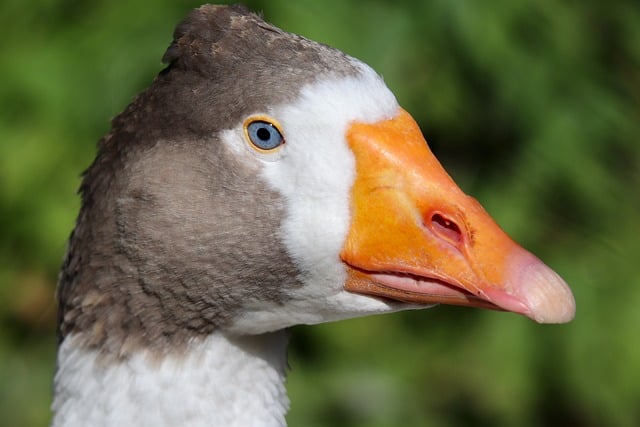Are you ready to embark on a mesmerizing journey through the captivating world of Persian belly dance? Get ready to be enthralled by the enchanting movements, the vibrant energy, and the rich cultural influences that shape this ancient art form. In this article, we will delve into the fascinating realm of Persian belly dance, specifically exploring the Bandari style from the southern region of Iran.
Bandari, with its dynamic shaking movements, mesmerizing twists, sensual hip circles, and dramatic hair tosses, will transport you to the heart of Persian dance. While distinct from belly dance, Persian belly dance shares a similar energy and spirit with Bandari, captivating audiences with its graceful and expressive movements.
But the exploration doesn’t end there. We will also uncover the intriguing connections between Persian belly dance and the mesmerizing cabaret style. Discover how legendary dancers like Jamileh seamlessly blended Persian triple steps and belly dance movements, creating a unique fusion that captivated audiences worldwide.
Prepare to be amazed as we delve deeper into the world of Persian belly dance, exploring the intricate arm techniques that play a significant role in this art form. Compare the different arm movements in Turkish, Lebanese, and Egyptian styles, and learn how incorporating Persian arm technique can add an extra layer of elegance and grace to your dance.
Join us on this captivating journey as we uncover the secrets and cultural influences that make Persian belly dance a truly mesmerizing and enchanting art form. Get ready to embrace the beauty, the passion, and the rich history that lie within each movement. Let the adventure begin!
Key Takeaways
- Persian belly dance refers to a regional folk dance from the south of Iran called Bandari.
- Bandari incorporates shaking movements, twists, hip circles, and hair tosses, and has a high-energy style.
- Some Iranians use the term Persian belly dance to refer to pre-revolution cabaret dancers like Jamileh, who incorporate Persian triple steps and belly dance movements in their dancing.
- Persian dance, including Bandari, emphasizes elegant arm techniques, which can be incorporated into belly dance.

What is Bandari?
Bandari is a regional folk dance from the south of Iran that incorporates shaking movements, twists, hip circles, and hair tosses, and it is often compared to belly dance. The dance is characterized by its energetic and vibrant style, with dancers exuding a sense of joy and celebration. Bandari’s musical influences stem from popular Arabic songs that are beloved among Persians. These catchy tunes create a lively and rhythmic atmosphere, enhancing the dynamic movements of the dance. Bandari dance steps and techniques involve a combination of quick footwork, graceful arm movements, and intricate hip isolations. Dancers often showcase their agility and flexibility through intricate footwork patterns and impressive spins. The dance is a reflection of the vibrant culture and traditions of the southern region of Iran, and it continues to captivate audiences with its infectious energy and expressive movements.

Comparison to Belly Dance
Immerse yourself in the vibrant movements of this regional folk dance, where shaking, twisting, and captivating arm techniques transport you to a world of energy and elegance. Persian belly dance, often compared to Bollywood, showcases the rich cultural influences of Bandari and adds its own unique flair. Here are some key aspects to consider:
- Bandari’s energetic movements, such as hip circles, hair tosses, and twists, create an infectious energy that is also present in Persian belly dance.
- Popular Arabic songs, beloved by the Persian community, are frequently used in Persian belly dance performances, adding to the lively atmosphere.
- The term “Persian belly dance” is sometimes used to refer to pre-revolution cabaret dancers like Jamileh, who incorporated Persian triple steps and belly dance movements into their performances.
- Arm techniques are a significant element in Persian dance, and dancers can seamlessly incorporate these elegant arm movements into their belly dance routines.
- While Turkish and Lebanese styles also utilize arm movements, they differ from the Egyptian style, showcasing the diversity within belly dance.
Through Persian belly dance, you can experience the fusion of Bandari and cultural influences, accompanied by popular Arabic songs, creating a mesmerizing and dynamic dance form.

Incorporating Persian Arm Technique
Discover the captivating elegance of incorporating the unique arm techniques from Persian dance into your belly dance routines. The Persian arm technique adds a graceful and fluid quality to your movements, enhancing the overall beauty of your performance. When it comes to Turkish style belly dance, incorporating the Persian arm technique can create a mesmerizing fusion of cultures. The delicate and intricate arm movements of Persian dance blend seamlessly with the powerful and energetic Turkish style. Similarly, in Lebanese style belly dance, the Persian arm technique can bring a new level of sophistication and refinement. The combination of Lebanese hip movements with the graceful arm technique creates a captivating and dynamic performance. By incorporating the Persian arm technique into your belly dance routines, you can add depth and richness to your dance vocabulary, allowing you to express yourself in a unique and enchanting way.
Frequently Asked Questions
What are the origins of Bandari dance and how has it evolved over time?
Bandari dance, with its origins in the southern region of Iran, is a vibrant and captivating dance form that has evolved over time. Its cultural significance lies in its ability to symbolize the rich heritage and traditions of the Bandar region. As globalization has spread its influence, the preservation of Bandari dance traditions has faced challenges. However, the resilience of the dance community and their dedication to keeping the traditions alive have helped to protect and promote the cultural heritage of Bandari dance.
Are there any specific costumes or attire associated with Bandari dance?
Traditional costumes hold great cultural significance in Bandari dance. The attire worn during this folk dance reflects the rich heritage of the region and adds to the overall aesthetic appeal of the performance. Bandari dancers typically wear vibrant and colorful garments, adorned with intricate embroidery and embellishments. These costumes often include flowing skirts, loose-fitting tops, and veils, allowing for graceful movements and showcasing the dancer’s skill and beauty. The traditional attire enhances the authenticity and visual appeal of Bandari dance, making it a captivating and immersive experience for both performers and spectators.
What are the main characteristics and techniques of Bandari dance?
Bandari dance is characterized by its energetic movements, including shaking, twisting, hip circles, and hair tosses. These techniques create a captivating and lively performance. Bandari dance holds great cultural significance in Persian culture, as it is a regional folk dance from the south of Iran. It reflects the vibrant and celebratory spirit of the people. Through its expressive movements and dynamic rhythms, Bandari dance has become an integral part of Persian culture, showcasing the rich heritage and traditions of the region.
How does Bandari dance differ from other regional folk dances in Iran?
Bandari dance in Iran stands out among other regional folk dances due to its unique characteristics and cultural significance. Its energetic shaking movements, hip circles, and hair tosses distinguish it from other styles. While Bandari shares some similarities with belly dance, it has its own distinct regional variations. The dance incorporates Persian triple steps and emphasizes elegant arm techniques, setting it apart from Turkish, Lebanese, and Egyptian styles. Understanding these differences is crucial for appreciating the rich diversity of Iranian dance traditions.
Are there any prominent dancers or choreographers who have contributed to the development of Bandari dance?
Prominent dancers and choreographers have played a significant role in the development of Bandari dance, a regional folk dance from the south of Iran. Their contributions have shaped the style and cultural influences of this vibrant dance form. From iconic figures like Jamileh, who incorporated Persian triple steps and belly dance movements, to contemporary artists pushing boundaries, the Bandari dance community continues to evolve. These talented individuals have brought their unique artistic expressions, further enriching the tapestry of Bandari dance.
